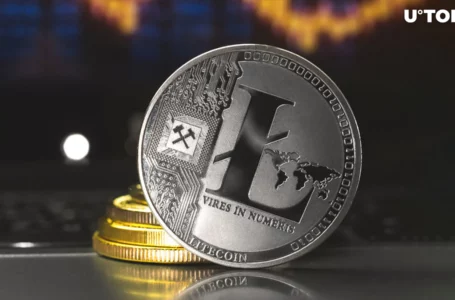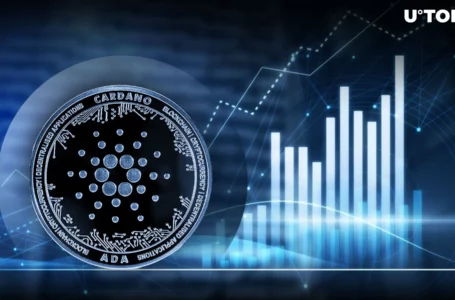
The Stock-to-Flow (S2F) model has become a popular one within the cryptocurrency industry and is commonly used to speculate on Bitcoin’s possible future price. In this guide, we’ll explain in detail what S2F is, who created it, how it applies to different types of assets, and its pros and cons.
What is the stock-to-flow (S2F) model?
The S2F is a model that predicts the possible future price of an asset by quantifying its scarcity.
This was originally applied to precious metals such as gold and silver, but its principles were applied to Bitcoin’s intricacies by the popular trader who goes by the Twitter handle PlanB, who has since been credited as the creator of Bitcoin’s stock-to-flow model.
PlanB is believed to be a former Dutch institutional trader with over 20 years of experience in finance.
Understanding the Bitcoin S2F Model
To understand how the BTC S2F works, we would first have to take a glimpse at the notion of scarcity and value, starting with fiat currency.
Local central banks, like the US Federal Reserve, control the issuance and distribution of a country’s fiat currency. The idea of money printing should focus on replacing damaged bills and ensuring that there is enough liquidity (money in circulation) for merchants and businesses to conduct economic transactions.
However, printing money excessively for long periods can lead to increased inflation as the paper money loses its value and generates a distortion in the pricing of goods and services. We’ve already seen examples of this in countries like Venezuela, Zimbabwe, and other places around the world.
Unlike fiat currency, gold, silver, Bitcoin, and other rare assets are very difficult to produce, cannot be easily forged, and have a fixed supply.
PlanB relies on an interesting concept coined by computer scientist Nick Szabo in The Origins of Money: “unforgeable costliness” – as the name suggests, it refers to the difficulty of producing a certain asset, such as precious metals and collectibles.
PlanB adds that most consumable goods (computer discs, soft drinks, cartridges, etc.) are easier to produce and the production rate can be doubled.
But Bitcoin and gold, for example, have unforgeable costliness because it’s simply very difficult to produce: mining BTC requires a serious amount of processing power which consumes a lot of electricity – mining gold is also hard and expensive – when a mine’s reserve gets low, the only thing left to scoop up and process is low-grade material.
Bitcoin is not an inflationary asset by design. There will only ever be 21 million Bitcoins, and what has made BTC valuable to investors and retail traders is its scarcity unlike fiat currency, which can be printed in excess and at will by central banks. Although BTC doesn’t perform very well as a medium of exchange like paper money, it has become a valuable store of value – much like precious metals like gold – for investors looking to protect their wealth. against cash hyperinflation.
Now that we have a broader idea of the concept behind it let’s see how we can apply it to Bitcoin and other assets.
Application of S2F to Bitcoin (BTC)
Stock is the number of existing stocks or reserves, and flow refers to the rate of production on an annual basis.
To calculate the BTC S2F, you grab the number of existing Bitcoin (Stock) and divide them by the annual flow of production (Flow).
The current BTC supply is around 19 million (or around 90% of the BTC ever minted) with an annual flow of 328,500 BTC, based on the current block reward size. If we apply these values to the S2F formula, it will give us an SF ratio of 57.712. This means that it will take 57 years to mine the total supply of BTC, leaving out the maximum supply and the halvings.
Gold, on the other hand, has a S2F ratio of 62. Technological advancements in the gold mining field have caused an increase and decrease in production rate over time.
Bitcoin has a systematic schedule. BTC blocks are created every 10 minutes on average. Each time a block is mined, the miner receives BTC as a reward. This reward is a new BTC.
But to keep its scarce nature, when the Bitcoin blockchain reaches 210,000 mined blocks, a halving occurs. Halving is when the rate of new bitcoins entering in circulation is cut by half, increasing the scarcity. The next halving is scheduled for 2024, so BTC’s S2F ratio would increase to 124.
Reviews of the S2F model
Some people support the S2F model, some don’t – and some have taken a strong stance against it. The model has had many detractors, including Ethereum co-founder Vitalik Buterin. Although he disagrees with this, he also noted: “that price spikes with no consistent correlation to halvings are not enough to refute S2F.”
Others have been sharper with their criticism. Nico Cordeiro, Chief Investment Officer at crypto quant fund Strix Leviathan, called the S2F model a “chameleon,” a term coined by Stanford professor Paul Pleifderer to describe models built upon “dubious assumptions.”
“The S2F is based on the assertion that the USD market capitalization of a monetary good (e.g. gold and silver) is directly derived from their new supply rate,” Cordeiro said, adding that he there was no evidence to support this model.
Problems and Limitations With the S2F
While the S2F model has been widely adopted by some in the crypto community and applied to other markets, its methodology is limited to forecasting an asset’s future price. First, the SF ratio doesn’t consider other important factors like demand or volatility, which can significantly affect an asset’s price.
BTC and the crypto market are still susceptible to large price swings due to regulatory crackdowns from governments seeking to stop cryptocurrency trading, or whales (wallet addresses with large amounts of funds) liquidating their positions in crypto exchanges, to name a few scenarios.
The Floor Model
There’s another type of S2F model, called the “Floor Model,” which is based on various technical tools such as the 200-day moving average. PlanB used it to predict closing prices throughout 2021, only accerting August’s price: $47k and September at $43k.
PlanB then predicted the November close near $100,000, but this turned out to be wrong as the closing price was well below $60,000. It was the ground model’s first failure, he admitted, but said the S2F was “still valid”.
S2F Current Predictions
PlanB has recently said that the S2F points to an estimate of $100k per BTC by 2023.
His new prediction sparked a war in the crypto Twitter community. Despite the model’s recent failures, its proponents claim that the next halving – scheduled for 2024 – would theoretically increase the price of BTC due to the reduction in supply, so the S2F “still has time to have raison”. This, of course, does not take into account other important factors that could affect the price of BTC in the race, such as demand.
PlanB maintained that the target for 2021 was $100k, and the same is for 2022 and 2023. However, BTC’s price data has been below the model line since the last halving in 2020. To this regard, he said the model would need to be refitted to the new lower data or wait until the end of the current cycle.
Closing words
The S2F formula and its variant, the Floor Model, has long been debated since its adoption by the crypto community. Some of PlanB’s predictions for BTC were accurate throughout 2021, but others also consistently failed.
As you see, the community is divided on whether or not the S2F ratio is a reliable metric when investing in crypto. Some believe in it just because it measures the current production flow and the current circulating supply and, in theory, the more a cryptocurrency’s S2F increases, so should its value.
In light of the above, using the S2F formula to invest in Bitcoin just because a rarer supply would theoretically increase the price is not the most advisable thing to do. Other considerations such as demand, stringent or tolerant regulatory climate, global geopolitical environment, etc. must also be taken into account.


















